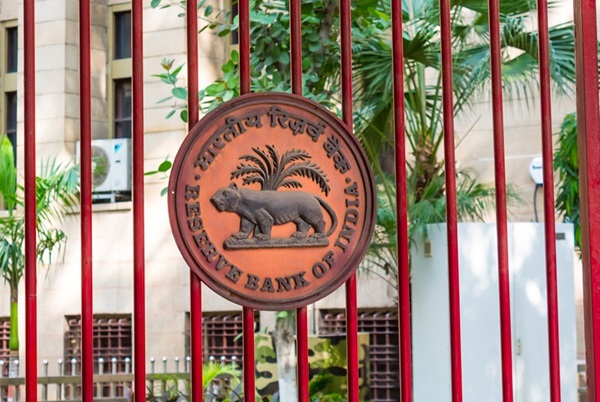.png)
If it Ain’t Broke, Don’t Fix it
The framework may warrant limited refinement—specifically, the inclusion of a clearly defined escape clause for exceptional circumstances.


Vivek Kumar, an economist at QuantEco Research, focuses on the Indian economy and specialises in the macro-quantitative intersections in the currency and bond markets.
August 26, 2025 at 2:05 PM IST
It is said that a task is as good as the target. A good inflation target should be specific, easily understood, relevant, and responsive. It is with this lens one should answer the four questions the Reserve Bank of India has posed in its discussion paper on the review of the Monetary Policy Framework.
- Whether headline inflation or core inflation would best guide the conduct of monetary policy, given evolving relative dynamics of food and core inflation and the continuing high weight of food in the CPI basket?
- Whether the 4% inflation target continues to remain optimal for balancing growth with stability in a fast-growing, large emerging economy like India?
- Should the tolerance band around the target be revised in any way including whether the tolerance band be narrowed or widened or fully done away with?
- Should the target inflation level be removed, and only a range be maintained within the overall ambit of maintaining flexibility without undermining credibility?
These are critical questions regarding the fundamental design of India’s Flexible Inflation Targeting framework. A policy consensus on this, involving both the central bank and the central government, would be essential in laying out the monetary policy framework for the next five years.
The four questions posed by the RBI can broadly be viewed through two lenses. The first concerns the choice of variable for inflation targeting, while the second relates to the flexibility provided by the target band and the rationale for retaining it.
Core vs Headline?
Most inflation-targeting central banks, including the RBI, have a formal target for headline inflation, the definition of which is similar across countries. Headline inflation is simple and easily comprehensible by the private and household sectors. It is also known to have a greater impact on retail inflation expectations, which in turn impacts the wage-price spiral in the economy.
As such, its choice as a target variable is useful in transmitting impactful policy signals. However, headline inflation is vulnerable to short-term volatility due to food and fuel prices and is generally not seen as a stable measure of inflation. This is where core inflation comes into the picture since it is devoid of short-term fluctuations in food and fuel prices and is a superior representation of demand-side pressures in the economy, something which the monetary policy is designed to influence in the short to medium term.
Having said that, for emerging economies like India, the share of household expenditure on food and fuel items tends to be high*.
As such, monetary policy based on core inflation targeting could potentially be suboptimal from a welfare perspective. This holds special significance for India, which is currently the most populous country in the world with a GDP per capita of $2,711 in 2024, giving it a rank of 144 out of 192 countries in the world.
Having said that, while headline inflation could be a practically superior choice for targeting in an emerging market economy, policymakers cannot disregard core inflation. It is more useful for providing forward guidance by central banks. After all, core inflation is the soul encapsulated in the body, that is, the headline.
Flexibility in Targeting
For India, 4% inflation is a reasonable target. Historical experience suggests that the output gap converges to zero with sustained inflation around these levels. While the tolerance band of 2% around the 4% target appears generous compared to other inflation-targeting emerging market central banks, it is extremely useful for India, which often witnesses sharp swings in food prices. Hence, the band should be retained in the current form as it provides policy flexibility to look through transient shocks.
Removing the 4% target while retaining the 2-6% band would be impractical, as by default one tends to associate the midpoint as an anchor in economic decision-making. While one could argue in favour of having just a target band amidst the current state of heightened global geoeconomic and geopolitical uncertainties, the flip side is that it could potentially weaken the policy resolve for inflation discipline, especially under conditions of fiscal dominance.
Overall, the extant framework in India, in effect since August 2016, has performed well. On a quarterly basis, headline CPI inflation remained within the target band about 72% of the time. The deviations can be attributed to COVID disruptions, followed by the adverse spillover impact from the Russia-Ukraine war. Nevertheless, India managed to lower its average inflation in the 9 years of the framework, in contrast to advanced economies and other many other emerging markets, which suffered from the same global shocks. More importantly, India’s inflation is now expected to be well aligned with the target, a feat not yet achieved by most central banks.
Hence, retaining the current form of the framework would be ideal. Having said that, there could be scope for refinement. For example, the framework needs to have a coded escape clause, which could be invoked under exceptional circumstances. In addition, the RBI could be accorded operational flexibility by extending the assessment period of the MPC’s inflation targeting performance from three quarters to four quarters**.
At a broader level, it is important to preserve policy tenets that boost the country’s macro-financial stability and policy credibility – both of which appear to be getting endangered in the current environment of geoeconomic and geopolitical instability.
* As per the Household Consumption Expenditure Survey 2023-24, the share of expenditure (on an imputed basis) on food and beverages stood at 48.4% and 40.3% for rural and urban households, respectively. The same on fuel and light items stood at 5.9% and 5.5% respectively for rural and urban households. The combined share of food, beverages, and fuel items in India’s currently used CPI with 2012 as the base year stands at 55.0%. The statistical ministry is scheduled to introduce a new CPI series by March 2026, following the incorporation of the results from the latest HCES.
** Currently, the departure of headline CPI inflation from its 2-6% target band for three consecutive quarters amounts to a failure by the MPC, for which the RBI Governor is answerable to the Parliament.



